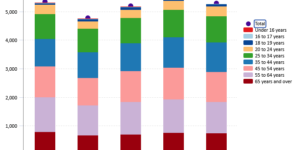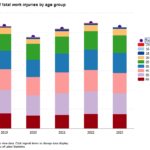A federal judge on Monday granted preliminary approval to a landmark deal that would compensate thousands of former NFL players for concussion-related claims.
The ruling by U.S. District Judge Anita Brody in Philadelphia came about two weeks after the NFL agreed to remove a $675 million cap on damages. Brody had previously questioned whether that would be enough money to pay all claims.
“A class action settlement that offers prompt relief is superior to the likely alternative–years of expensive, difficult, and uncertain litigation, with no assurance of recovery, while retired players’ physical and mental conditions continue to deteriorate,” Brody wrote.
More than 4,500 former players have filed suit, some accusing the league of fraud for its handling of concussions. They include former Dallas Cowboys running back Tony Dorsett and Super Bowl-winning Chicago Bears quarterback Jim McMahon, who suffers from dementia.
The settlement is designed to last at least 65 years and give $1 million or more to retirees who develop Lou Gehrig’s disease and other profound neurological problems.
“This is an extraordinary settlement for retired NFL players and their families—from those who suffer with neuro-cognitive illnesses today, to those who are currently healthy but fear they may develop symptoms decades into the future,” plaintiffs’ attorneys Sol Weiss and Christopher Seeger said in a statement.
NFL senior vice president Anastasia Danias said in a statement that the league was “grateful to Judge Brody for her guidance and her thoughtful analysis of the issues as reflected in the comprehensive opinion she issued today.”
The original settlement included $675 million for compensatory claims for players with neurological symptoms, $75 million for baseline testing and $10 million for medical research and education. The NFL would also pay an additional $112 million to the players’ lawyers, for a total payout of more than $870 million.
The revised settlement eliminates the cap on overall damage claims but retains a payout formula for individual retirees that considers their age and illness. A young retiree with amyotrophic lateral sclerosis, or Lou Gehrig’s disease, would receive $5 million, a 50-year-old with Alzheimer’s disease would get $1.6 million and an 80-year-old with early dementia would get $25,000.
Even with the cap removed, both sides said they believe the NFL will spend no more than about $675 million on damage claims by ex-players.
Critics of the deal have said the league, with annual revenues approaching $10 billion, was getting off lightly. They could raise objections at a fairness hearing scheduled for Nov. 19, and ultimately opt out of the settlement.
However, they would then face the risk of a protracted legal fight, and would have to prove any injuries were caused by NFL concussions and not any suffered in youth or college sports. The proposed NFL settlement had originally barred claimants from seeking a separate settlement against U.S. college sports governing body NCAA, but that clause has been removed. A separate lawsuit is pending against the NCAA in Illinois.
“I think the judge has forced them to make improvements,” said University of Richmond law professor Carl Tobias, who teaches product liability law. “I think she always felt she had an obligation to the players, to be sure they were getting a fair deal …given the treatment to date.”
The settlement would be capped at $4 million on behalf of players diagnosed with traumatic brain injury after their deaths, such as San Diego star Junior Seau or Pro Bowler Dave Duerson. Both of their families, through lawyers, have expressed concerns about the settlement. Duerson died at age 50. A family lawyer has called their projected $2.2 million award to the family “not adequate.”





















 New Specialty Insurer Says Collector Car Owners Are Being Overcharged
New Specialty Insurer Says Collector Car Owners Are Being Overcharged  U.S. Labor Agency Releases Final 2023 Injury, Fatality Stats
U.S. Labor Agency Releases Final 2023 Injury, Fatality Stats  Property and Casualty Insurance Trends for 2025
Property and Casualty Insurance Trends for 2025  Loss-Free Property Cat Rates Fall 5-15% as Reinsurer Appetite Grows: Guy Carpenter
Loss-Free Property Cat Rates Fall 5-15% as Reinsurer Appetite Grows: Guy Carpenter 





